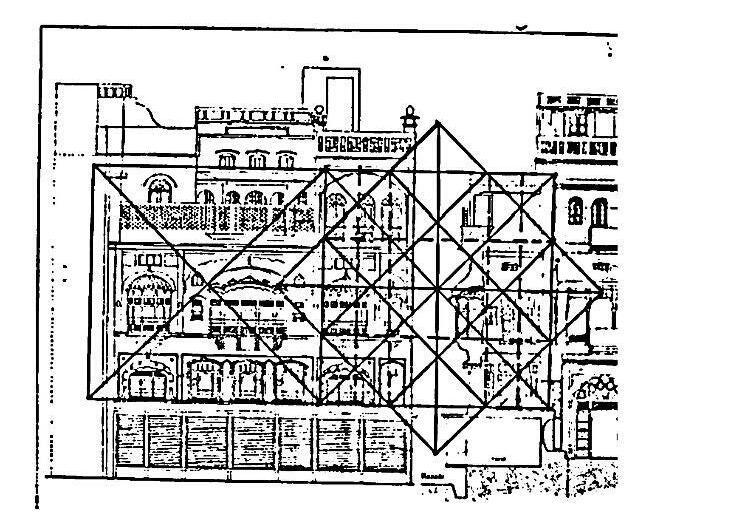
2 minute read
6.6CONCLUSIONS
Difficult sites if observe keenly can help in achieving good architecture
With sensitivity it is possible to accommodate a modern design which will complement the old one
Advertisement
The use of traditional materials are not incompatible with contemporary architecture.
Good design extends into public areas beyond the building
Successful architecture can be produced either by following historic precedents closely, by adapting them or by contrasting with them
Views and vistas can be enhanced by the building
Contrasting buildings which are not designed with same style as that of buildings in it context can still have the feel of that place
Sense of place can be achieved through
The buildings design which is the result of dialogue between architect and local people of the area can produce good results in terms to create feeling of the place
Aspect 3
Geomtry
7.0 THE TRADITIONAL ISLAMIC GEOMETRY
7.1 INTRODUCTION
In nature, we can see geometry all around us the sense of unity and oneness in nature is all through the geometry which is sometimes underlying and as we explore it we get to know it
This principle of connections and unity among nature describe harmony and rhythm and how does it affect us that is why architects and artists have created masterpieces by exploring geometry and reading through cosmos. Many forms in the nature are associated to geometry for example the formation of sunflower or hexagonal cells of honey bees
In the art and architecture of traditional society these principles inspire ones creativity to explore it and use it, the use of geometry in tradition architecture in historical buildings and monuments which is available to us to read and research tells us about the history and how they have used it in architecture along with the functionality if the building
Nature forms systems that are symmetrical or in rhythm and sometimes both, man has used theses in architecture by creating symmetry or rhythm with these symbols this all is created with one center which is the basis of the rhythm or symmetry which also tells us about the first principle of Islam(TAWHID)
I have tried to find and know how these systems and geometry are used in the buildings inside walled city and in other traditional buildings
7.2 THE LAL HAVELI
7.2.1
7.2.2CONCLUSIONS
LAL HAVELI
What I came to know through the geometry of lal haveli was that although its site is not based on a perfect square but it is still following the rules of traditional geometry the lines of two rotated square marks the walls of the room and the rest is designed according to function
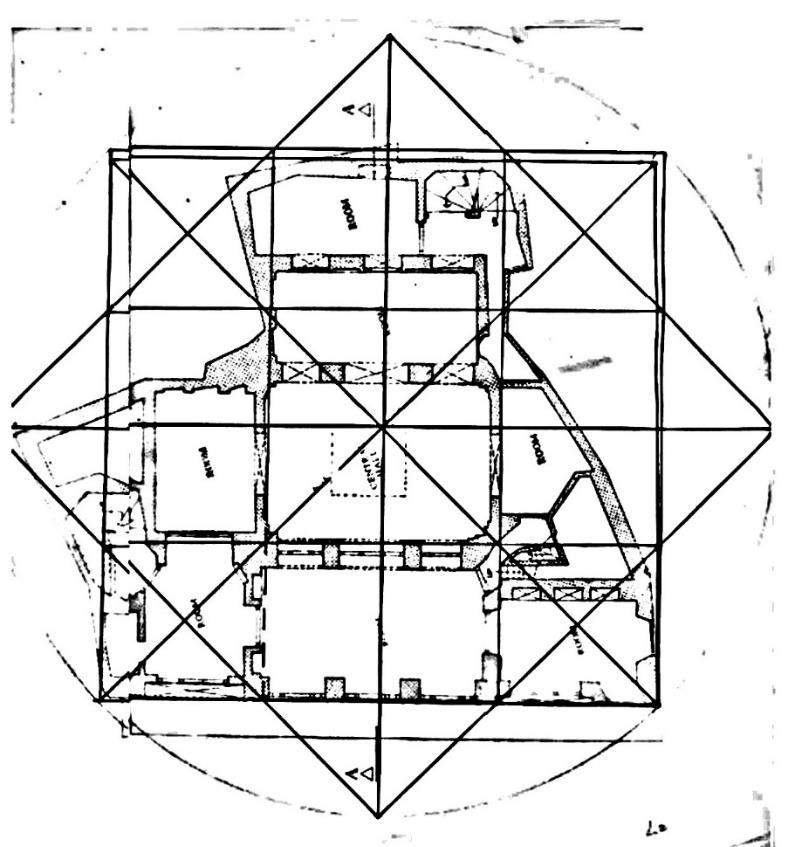
7.3 THE CHUNA MANDI HAVELI
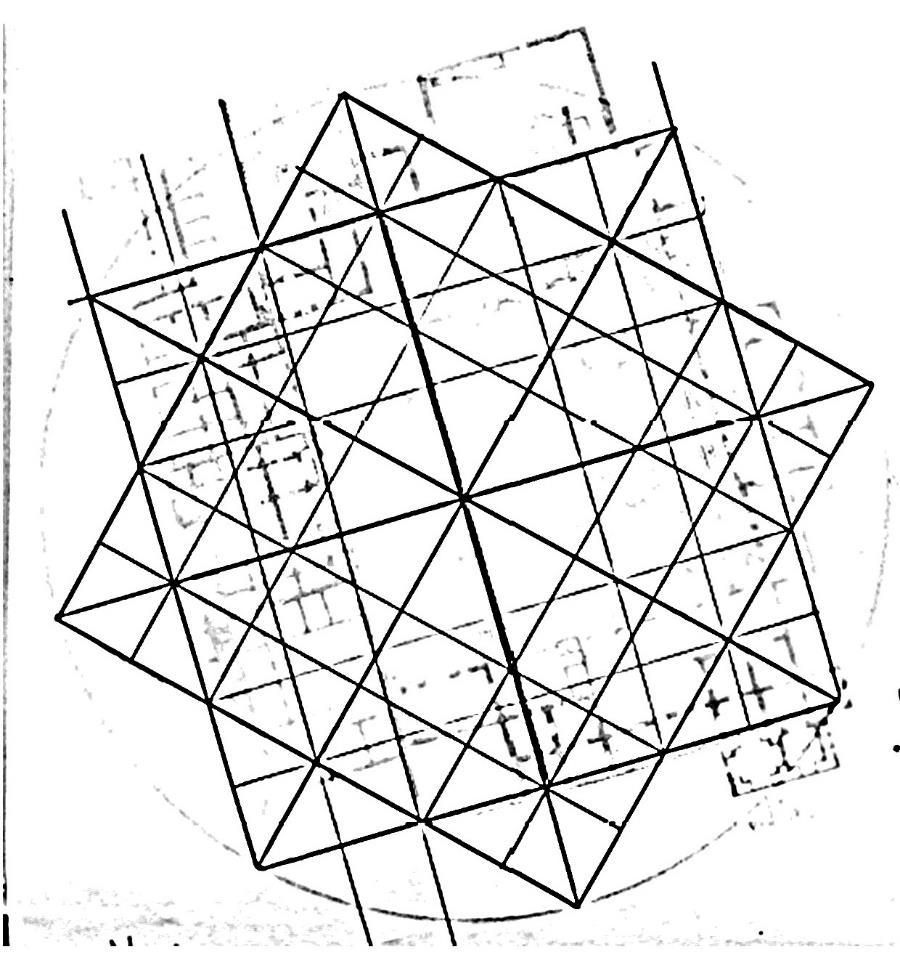
The Chuna Mandi Haveli
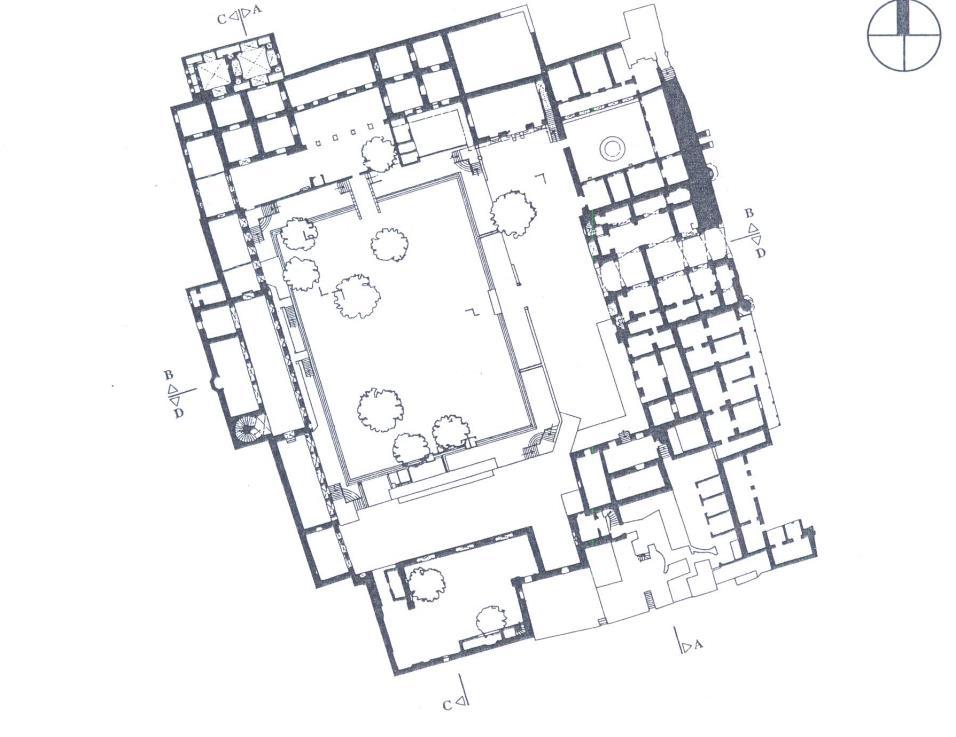
7.3.3 CONCLUSIONS
The Chuna Mandi Haveli
The chuna mndi haveli’s courtyard does not follow the rules of geometry as it is not centralized but the spaces inside the haveli and the rooms deigned inside totally follows the basic rule of hasht bahisht geometry
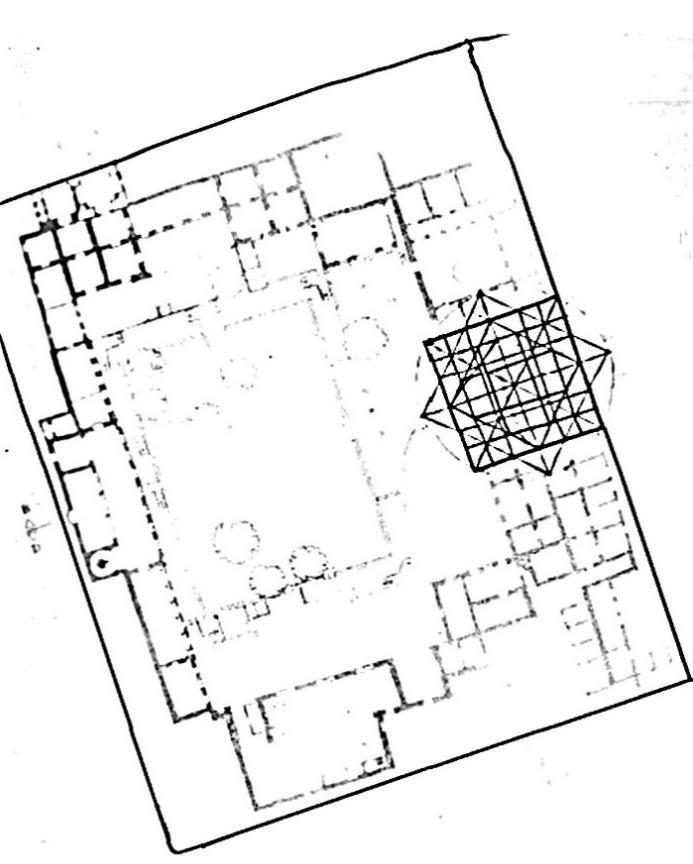
The elevation of the house is based on half hasht and the heights are also based on the geometry.
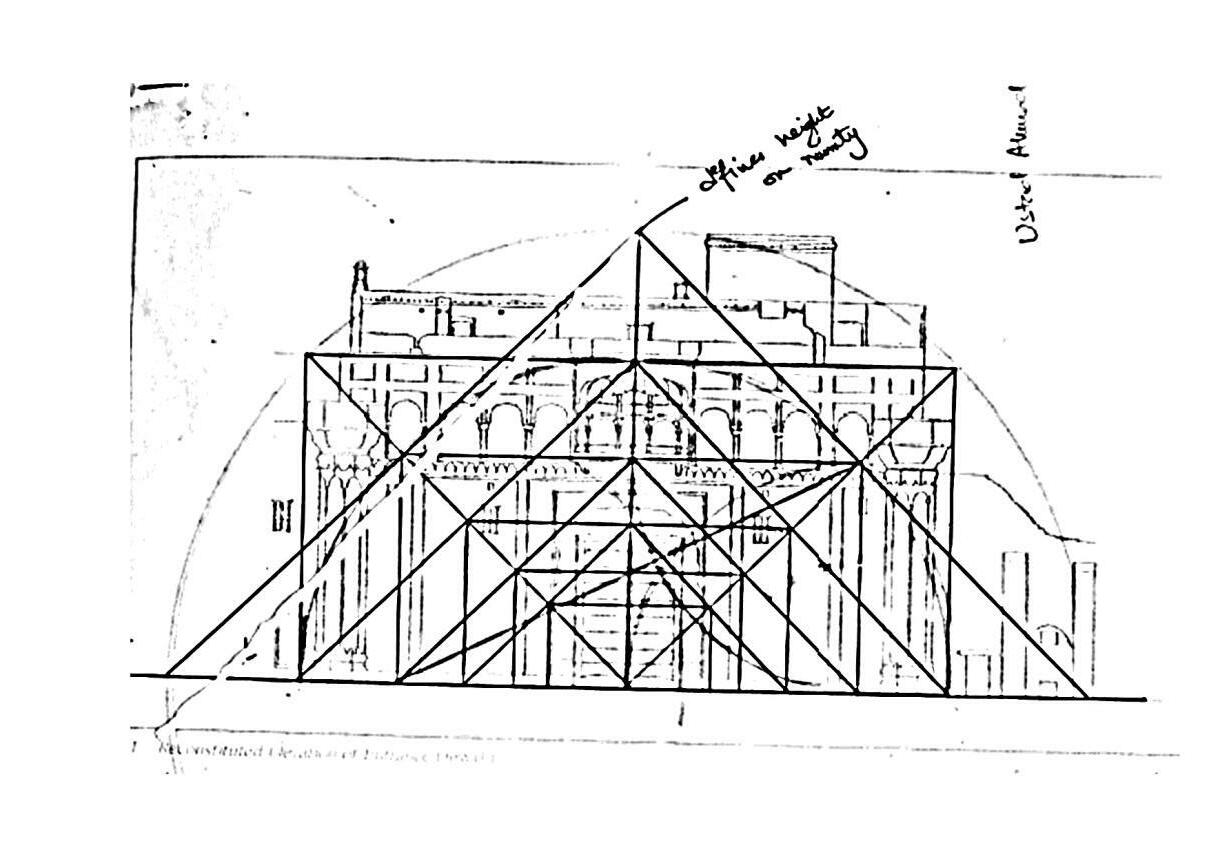
7.4 HOUSE NO D/3264
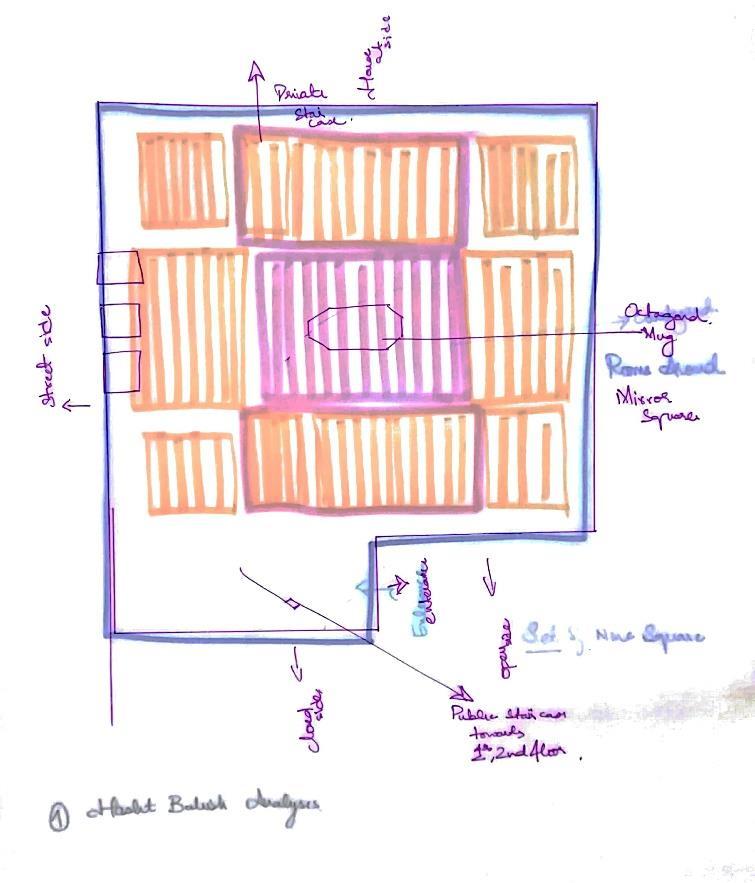
SOOTAR MANDI BAZAAR
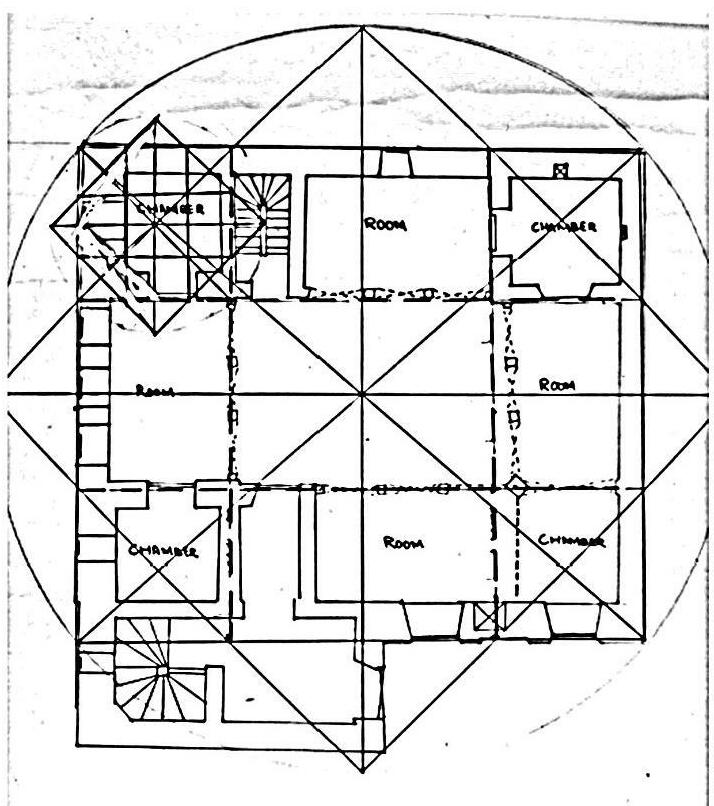
7.4.2 CONCLUSIONS
HOUSE D/3264(SOOTAR MANDI BAZAAR)
This house totally follows the geometry as its site is square but a part of it which does not come inside the geometry is there fulfilling its function and the wall thickness of the plan is also taken from the small hasht made inside the square if the room which is followed in th plan of house










